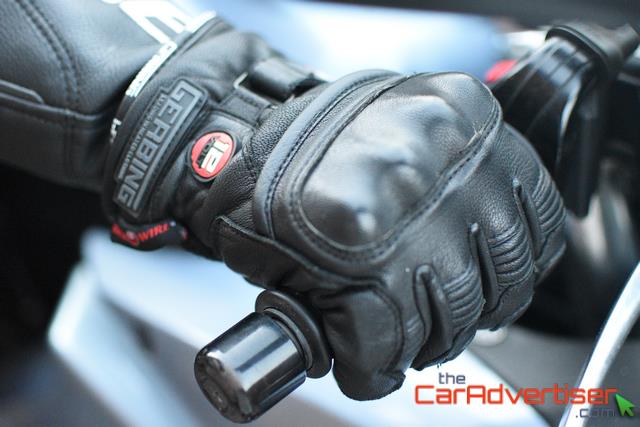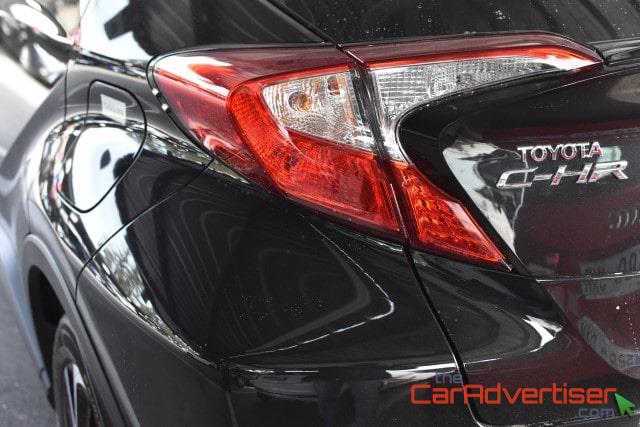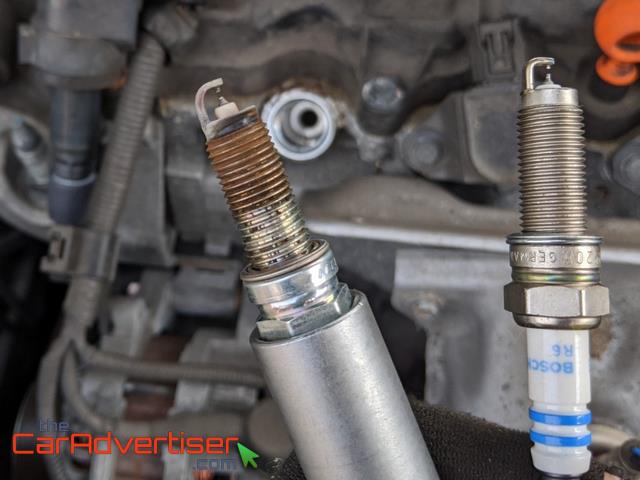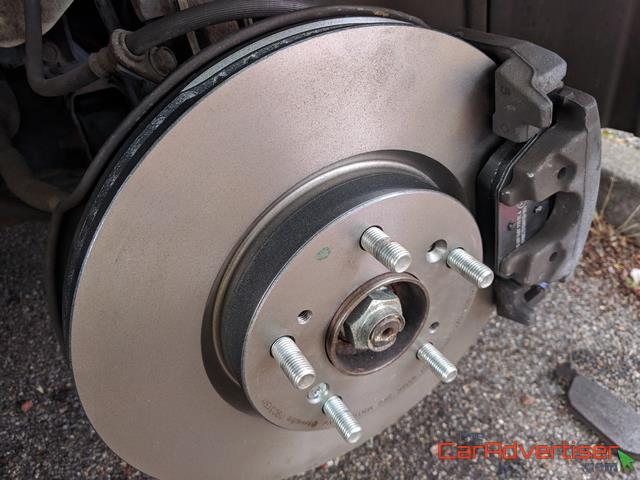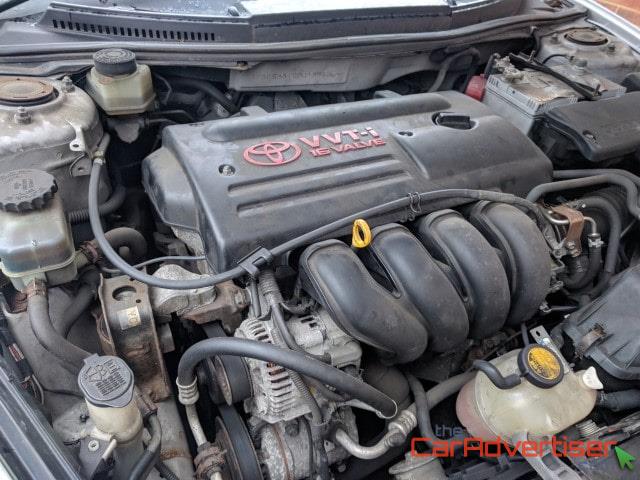
What is the best tyre for british weather conditions?
Most of us see car tyres as a necessity that inevitably need replacing from time to time, normally when we are told it would not pass the next MOT as the tread depth is approaching the legal limit. What is the minimum legal tyre tread requirement? 1.6 mm. At this point we have a tyre fitted recommended by the garage without giving it a second thought, we just ask 'how much?'. If it's a bit over our budget we shop around, trying to find a cheaper one. A tyre's a tyre, right?. Following this principle a phone is also just a phone, so what's the point of spending more on the latest Pixel, Samsung Galaxy S model or the newest iPhone? As phone are not the same, neither are tyres. They are the cars only contact point with the road surface, therefore they are one of the most important things to consider when replacing. In most European countries it is a legal requirement to have the same pair of tyres fitted on both sides (front and back) of the vehicle. While this is also a very sensible thing to do, it is not required by law in the UK and as a result you can end driving a car with 4 different tyres all worn differently and each providing different level of grip. Needless to say the results are unpredictable handling, higher fuel usage, longer breaking distances and easier to lose control of the car. Would anyone really want that?
Budget vs Premium tyres
Budget tyres may seem appealing at first can be way more costly in an accident that could have been prevented by the superior of performance of premium tyres. Wet stopping distance between an A and G grade tyre can be 18 meters (~20 yards) travelling at just 50 mph. Spending more does not necessarily mean getting better performance for all conditions.
How to know which tyres are suitable for me?
Tyres fall into 3 categories for different weather conditions: summer, winter and all-season.
Summer tyres
Compounds used in summer tyres make them best suitable for temperatures over 7 Celsius on both dry and wet roads. Driving on summer tyres in cold weather results in less grip, reduced handling, longer braking distances and poor driving ability in snow.
Winter tyres
Designed to drive in low temperatures (below 7 Celcius) on dry and snowy roads. Does it mean if a tyre can perform well in cold, should it also work well in the summer? No, because the rubber is more flexible making grip less optimal, increasing stopping distances in both dry and wet condition while the rubber will also wear off much quicker. Read more on running on winter tyres in the summer on michelin.co.uk.
All-season tyres
All-season tyres meant to provide optimal performance during both summer and winter, but will never be as good at either. Most all-season tyres are based on winter tyres, but with better dry performance. An exception is the successful Michelin CrossClimate, which was based on a summer tyre with improved ability in driving during winter conditions.
What do tyre markings mean?
- M+S mark shows it is suitable for winter and snow
- Snowflake on some M+S tyres symbolize a high quality winter tyre with excellent grip
- Sizing: e.g. 225/50r16 mean 225 mm wide with 50% aspect ratio suitable for 16 inch rim
- Date of manufacture: e.g. 1518 mean the 15th week of 2018
- Load rating is a 2-3 digit number normally displayed before the speed rating
- A letter after sizing information e.g. W stands for speed rating
- More details about tyre markings explained on GoodYear.eu
| Speed rating | Top speed |
|---|---|
| N | 87mph |
| P | 93mph |
| Q | 99mph |
| R | 106mph |
| S | 112mph |
| T | 118mph |
| U | 124mph |
| H | 130mph |
| V | 149mph |
| Z | 150mph+ |
| W | 168mph |
| Y | 186mph |
| Load Rating | Load capacity (kg) |
|---|---|
| 60 | 250 |
| 61 | 257 |
| 62 | 265 |
| 63 | 272 |
| 64 | 280 |
| 65 | 290 |
| 66 | 300 |
| 67 | 307 |
| 68 | 315 |
| 69 | 320 |
| 70 | 335 |
| 71 | 345 |
| 72 | 355 |
| 73 | 365 |
| 74 | 375 |
| 75 | 385 |
| 76 | 400 |
| 77 | 412 |
| 78 | 425 |
| 79 | 437 |
| 80 | 450 |
| 81 | 462 |
| 82 | 475 |
| 83 | 487 |
| 84 | 500 |
| 85 | 515 |
| 86 | 530 |
| 87 | 545 |
| Load Rating | Load capacity (kg) |
|---|---|
| 88 | 560 |
| 89 | 580 |
| 90 | 600 |
| 91 | 615 |
| 92 | 630 |
| 93 | 650 |
| 94 | 670 |
| 95 | 690 |
| 96 | 710 |
| 97 | 730 |
| 98 | 750 |
| 99 | 775 |
| 100 | 800 |
| 101 | 825 |
| 102 | 850 |
| 103 | 875 |
| 104 | 900 |
| 105 | 925 |
| 106 | 950 |
| 107 | 975 |
| 108 | 1000 |
| 109 | 1030 |
| 110 | 1060 |
| 111 | 1090 |
| 112 | 1120 |
| 113 | 1150 |
| 114 | 1180 |
| 115 | 1215 |
| Load Rating | Load capacity (kg) |
|---|---|
| 116 | 1250 |
| 117 | 1285 |
| 118 | 1320 |
| 119 | 1360 |
| 120 | 1400 |
| 121 | 1450 |
| 122 | 1500 |
| 123 | 1550 |
| 124 | 1600 |
| 125 | 1650 |
| 126 | 1700 |
| 127 | 1750 |
| 128 | 1800 |
| 129 | 1850 |
| 130 | 1900 |
| 131 | 1950 |
| 132 | 2000 |
| 133 | 2060 |
| 134 | 2120 |
| 135 | 2180 |
| 136 | 2180 |
| 137 | 2240 |
| 138 | 2360 |
| 139 | 2430 |
| 140 | 2500 |
| 141 | 2575 |
| 142 | 2650 |
| 143 | 2725 |
| Load Rating | Load capacity (kg) |
|---|---|
| 144 | 2800 |
| 145 | 2900 |
| 146 | 3000 |
| 147 | 3075 |
| 148 | 3159 |
| 149 | 3250 |
| 150 | 3350 |
| 151 | 3450 |
| 152 | 3550 |
| 153 | 3650 |
| 154 | 3750 |
| 155 | 3875 |
| 156 | 4000 |
| 157 | 4125 |
| 158 | 4250 |
| 159 | 4375 |
| 160 | 4500 |
| 161 | 4625 |
| 162 | 4750 |
| 163 | 4857 |
| 164 | 5000 |
| 165 | 5150 |
| 166 | 5300 |
| 167 | 5450 |
| 168 | 5600 |
| 169 | 5800 |
| 170 | 6000 |
European Tyre Labeling
Tyre labels must be provided for each tyre sold in EU (since end of 2012) and are similar to the ones seen for electrical products, because of an EU Commission regulation released in 2009 that is part of the Energy Efficiency Action Plan. The goal is to make end users aware of the energy efficiency of the products they purchase (think of fridges or washing machines). Tyre labels show fuel effiency (tested against rolling resistance), wet grip stopping distance performance from 50 miles per hour and noise levels in decibels (lower the better). Find more detailed information about tyre label on etrma (European Tyre & Rubber Manufacturers Association) or wikipedia
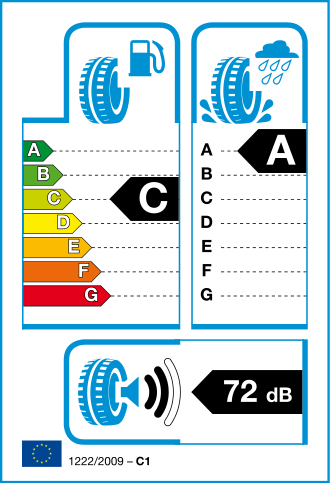
How long do tyres last?
With average UK driving around 3-4 years, meaning about 40000 miles. Yet it is recommended not to wear the tread down to its legal limit as performance degrades. If you notice the car losing grip on a regular basis on curving roads or in turns while driving normally it may be best to look for replacements. Rubber also deteriorates over time, that's why it is recommended to replace them when reaching 10 years of age. Drive slowly with newly fitted tyres for the first 100 miles, because the silicone agent used during manufacture to extend shelf-life can make it more slippery and must wear off.
Tyre buying tips
- Always buy them in pairs for the front or back of your car (provides better handling and even wear)
- Buy tyres suitable weather conditions (while in southern Spain summer tyres are suitable all year around in Scotland it may be best to keep a set of summer and a set of winter tyres)
- Shopping around does not mean looking for the cheapest available tyres, but finding tyres from trusted retailers at the best possible prices
- Do not wait until the tyre wears down to the legal limit. Its performance will degrade much before that
- Having a puncture does not necessarily mean you need a tyre, try having it plugged
- Check for date of manufacture when purchasing new tyres
- In Southern England where temperatures (almost) never drop below 0 good summer tyres can be efficient enough
- All-season tyres may be an ideal choice in most of britain as it rarely snows, but mostly mild with dry/wet road surfaces all year around
- Check the European Tyre Label and aim for A or B rated wet braking performance (there is about 3 meter stopping distance increase by each grade from 50 mph on wet road surface)
- Buy tyres with higher speed rating than the maximum speed of your car
When looking to buy a car and money is of concern, it is recommended to check the vehicle's car size and tyre conditions. Normally the larger the tyre the more expensive it is, but it is not always the case. The more special the size is the choices are more limited with prices usually being higher. Be prepared to pay over £800 for a good set of 4 tyres if own an SUV or a vehicle with rim size 18+ inches, while it can be less than half of that for a premium set of 16 or 17 inch tyres.
Did you find this article helpful?
Help the site grow with more content to reach a wider audience while keeping it free!

